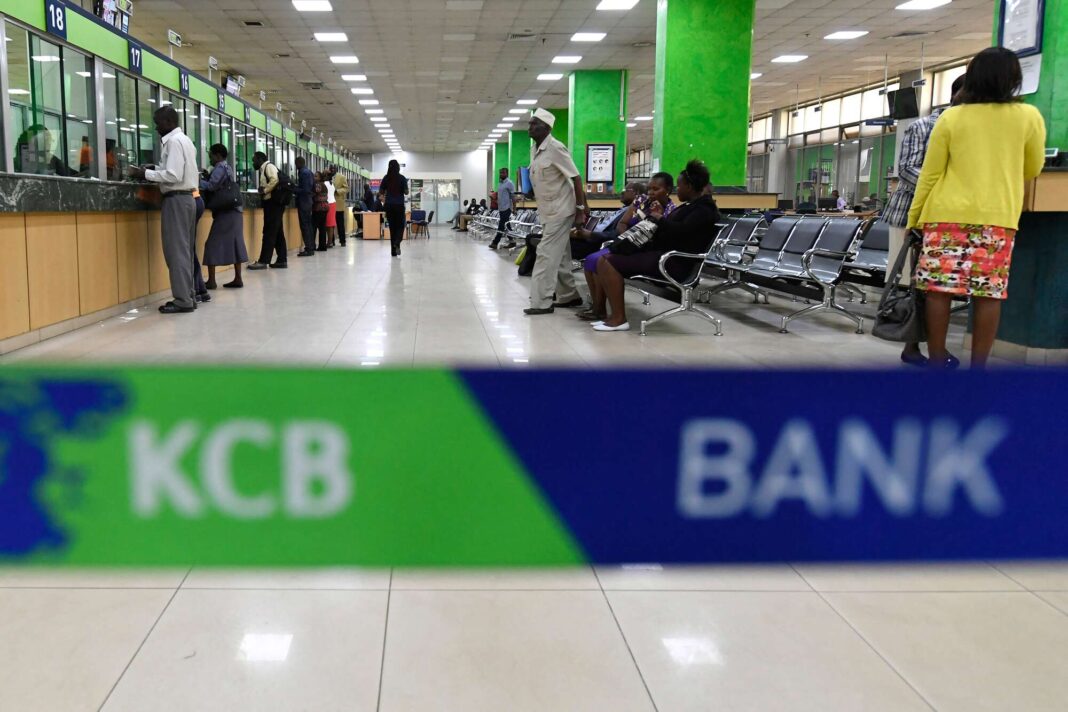Judge Smells A Rat As Bank’s Shocking Negligence And Suspicious Silence Over Fraud Raises Red Flags
The vaults of Kenya Commercial Bank have been torn wide open, revealing a scandal so brazen, so meticulously executed, that a High Court judge has been forced to conclude what many Kenyans have long suspected: this was an inside job.
In a scathing judgment delivered last week, Justice John Wananda didn’t mince words as he ordered KCB to cough up Sh24 million stolen from a deceased customer’s account through what he described as a “well-orchestrated scheme” involving suspected insiders at both the bank’s Nandi Hills branch and the Nakuru High Court.
The judge’s damning verdict: KCB displayed “shocking negligence” and possibly “vested interest” in facilitating the heist.
Even more alarming? The bank never reported the fraud to police, compelling Justice Wananda to declare: “This omission compels me to ‘smell a rat’.”
The Perfect Crime: A Dead Man Who Wasn’t Dead
The audacity of the scheme is breathtaking. In January 2013, while Nathaniel Kibitok Sieley was tending to his sprawling 70-80 acre tea farm in Nandi, completely oblivious to the vultures circling his wealth, a phantom “son” materialized at the Nakuru High Court with a jaw-dropping claim: Sieley was dead.
The impostor wasted no time filing a succession case, targeting the tea farmer’s multi-million shilling empire. There was just one small problem with this elaborate con: Sieley was very much alive, conducting business as usual.
But fate dealt the fraudsters an unexpected hand.
Two months later, in March 2013, Sieley actually died, leaving behind an estate that included a staggering Sh23.5 million sitting in his KCB account at the Nandi Hills branch, an account he had faithfully operated for over 40 years.
The fake son didn’t miss a beat. Armed with forged court documents, including a bogus grant of letters of administration purportedly signed by Justice Maureen Odero and dated July 22, 2017, the con artist walked into KCB and demanded his “inheritance.”
KCB’s Inexcusable Blunder
What happened next should send shivers down the spine of every Kenyan with money in a bank.
Despite handling one of the branch’s biggest clients, despite dealing with a colossal sum of Sh24 million that had accumulated through additional credits, KCB handed over every single shilling to the fraudster in February 2019.
The account was closed online with a zero balance, and the money vanished into thin air.
Justice Wananda was unsparing in his assessment of the bank’s conduct: “For the pay-out of such a colossal amount of money, I find it too reckless for the defendants to have effected such a huge transaction without at least demanding the supply of any documentation or details of the payee, even if just for record purposes. It is, to say the least, incredible and just unbelievable.”
The judge’s incredulity deepened when he discovered that KCB couldn’t or wouldn’t provide basic transaction records.
The bank claimed the money was transferred to an account held by the suspected fraudster at its Nairobi branch, but astonishingly, “particulars of the account allegedly held by the man have never been disclosed, and no explanation was given for this failure.”
Even more damning: the bank statement showed only an entry marked “online closure” with a “0.00” balance and absolutely no details. No acknowledgment from the recipient. No paper trail. Nothing.
“The bank also never produced any acknowledgment of any kind from the recipient confirming that indeed he received any money, yet the bank account alleged to be in his name is also held at the same bank,” Justice Wananda noted with palpable disbelief.
The Fake File That Fooled Everyone
The depth of the conspiracy became clear when Christine Menya, Deputy Registrar at the Nakuru High Court, took the witness stand with a bombshell revelation: there were two files bearing the identical case number, Nakuru High Court Succession Cause No 3 of 2013.
One was genuine. The other, relating to Sieley’s estate, was a masterpiece of forgery.
Menya testified that the fake file was riddled with irregularities.
The petitioner wasn’t named. There was no letter from a village chief. No Gazette Notice. Most tellingly, the fake grant was dated July 22, 2017, a Saturday, when courts don’t operate.
When asked if the fake file was ever placed before a judge for action, Menya confirmed what many suspected: “The contested grant was not authentic and did not originate from the court.”
How did two files with identical case numbers end up in the Nakuru court registry? Menya couldn’t explain. But Justice Wananda could: “This fraud seems to have been a well-orchestrated scheme, and a collusion involving unscrupulous persons in the two institutions involved: the first defendant’s Nandi Hills Branch and the High Court at Nakuru.”
Family’s Nightmare Discovery
Meanwhile, Sieley’s legitimate family members were going through proper channels, completely unaware they were being robbed blind.
They filed their own succession case at the Eldoret High Court in 2018 and obtained a genuine grant of letters of administration on September 28, 2018.
Four family members were appointed administrators of the estate.
It was only when they presented their court documents to KCB in a bid to discharge their duties that they discovered the account had been drained.
Their shock must have been profound. The family patriarch, one of the bank’s biggest clients in the region, had been banking with KCB for four decades. And in a matter of months after his death, everything was gone.
Andrew Kipkorir, testifying for the family, painted a picture of a successful farmer who had built substantial wealth through decades of hard work.
That wealth had been entrusted to KCB. And KCB had failed spectacularly to protect it.
The Deafening Silence
Perhaps the most disturbing aspect of this entire saga is what didn’t happen after the fraud was discovered.
KCB never filed a police report. Not when the family first raised the alarm in May 2019.
Not even after the full extent of the fraud became apparent. The bank’s stunning silence raised questions that Justice Wananda felt compelled to address head-on.
“This omission to lodge a complaint with the police, or with the well-known Bank Fraud Investigation Unit (BFIU) domiciled at the Central Bank, specially formed and existing to handle such matters, compels me to ‘smell a rat’,” the judge declared.
Why would a major financial institution, victimized by such a brazen fraud, fail to report it to authorities? Was it embarrassment? Or was it something more sinister, a desire to keep the details of insider complicity buried?
Justice Wananda noted pointedly that in the ordinary course of business, banks maintain meticulous records of all transactions.
Yet in this case, no such records were produced in court. The judge’s implication was clear: either KCB’s record-keeping is criminally negligent, or the bank has something to hide.
A Fiduciary Duty Betrayed
The court’s ruling centered on a fundamental principle of banking: fiduciary duty.
When customers entrust their money to a bank, they expect that institution to exercise reasonable care and skill. KCB, Justice Wananda found, had spectacularly failed in this duty.
“The bank cannot be allowed to act recklessly to the detriment of the client,” he stated firmly.
The bank had attempted to defend itself by arguing that it had been served with what appeared to be a legitimate court document and that the High Court in Nakuru had confirmed its authenticity. But Justice Wananda wasn’t buying it.
Basic due diligence, the judge noted, would have revealed glaring red flags. A phone call to verify the grant. A request for supporting documentation. Simple questions about the supposed beneficiary’s relationship to the deceased. KCB did none of these things.
Instead, the bank facilitated what the judge characterized as an “inside job” that saw Sh24,069,373.60 disappear from the deceased’s account.
The Unanswered Questions
Justice Wananda’s judgment raises more questions than it answers, and these questions should keep Kenya’s banking executives awake at night.
Who at KCB’s Nandi Hills branch facilitated this transaction? Did anyone question why a 40-year customer’s account was suddenly being closed online with the entire balance transferred out? Were there any alarm bells, any compliance checks, any verification procedures?
And at the Nakuru court, how did a fake file find its way into the registry? Who created it? Who had access to case numbers, court seals, judges’ signatures?
The judge concluded that this was “definitely an ‘inside job’ within the two institutions,” yet bizarrely, “for reasons not explained, does not even seem to have been reported by either of the two to the police for investigations.”
As of now, no criminal charges have been filed. The suspected fraudster remains at large. The insiders who may have facilitated the scheme continue to operate in the shadows.
Justice Delayed But Not Denied
The Sieley family fought for six years to get their money back. They sued in May 2019, accusing KCB of “intermeddling with the estate” and facilitating the illegal withdrawal of funds. They also named the Attorney General on behalf of the Nakuru High Court.
Throughout the legal battle, KCB maintained it was not complicit, arguing that it had acted on a court document that had been confirmed by the High Court. But Justice Wananda systematically demolished these defenses.
The ruling last week finally gave the family vindication. KCB has been ordered to restore the account and return the full Sh24 million.
But money alone cannot erase the trauma of discovering that the institution entrusted with a loved one’s life savings had handed it over to criminals with apparent ease.
A Warning To All
This case should serve as a wake-up call to every Kenyan. If a long-standing customer with decades of banking history and millions in savings can have their estate looted through such a crude scheme, what protection do ordinary depositors have?
The rot revealed in this case, the stunning negligence, the suspicious lack of police reports, the missing transaction records, all point to systemic failures that extend far beyond one branch in Nandi Hills.
Justice Wananda’s judgment is now public record.
The facts are laid bare. The question is: what will the banking regulator, the Central Bank of Kenya, do about it? What will the Director of Public Prosecutions do? What will KCB’s board of directors do?
For now, the fraudster remains free. The insiders who may have enabled the scheme face no consequences.
And somewhere in Kenya, Sh24 million that was stolen from a dead man’s account sits in unknown hands, a testament to just how easy it is to rob a bank when you have friends on the inside.
The Sieley family may have won their case, but the larger question remains unanswered: How many other families have been victimized in similar schemes that never made it to court? How many other “inside jobs” lurk in the shadows of Kenya’s banking system?
Justice Wananda smelled a rat. The stench, it seems, runs far deeper than one fraudulent court file and one reckless bank transaction.
Thanks to this fraud, coupled with what the judge called “shocking negligence displayed (or perhaps vested interest?) by concerned officers,” a whopping Sh24 million vanished.
But the damage to public confidence in Kenya’s financial and judicial institutions? That cannot be quantified.


